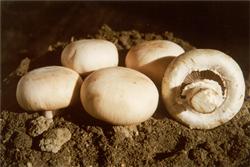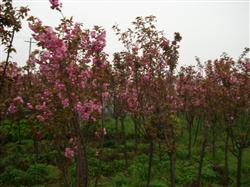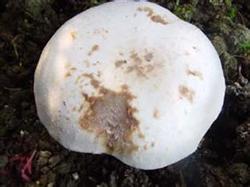What is Trichoderma bisporus?

What is Trichoderma bisporus? Please introduce Trichoderma bisporus, commonly known as green mold, is one of the most common miscellaneous bacteria in mushroom production. It can be infected by Trichoderma in all aspects of mushroom production. Trichoderma has a strong ability to decompose cellulose, can produce toxins, and inhibit the formation and growth of hyphae and fruiting bodies. Trichoderma propagates rapidly and often breaks out in a short period of time. The light harm causes less mushroom locally, and the serious harm can lead to the scrapping of the strain or the destruction of the whole bed culture material, and the particles are not harvested. The prevention and control measures should start from the elimination of the source of primary infection and ecological management. the specific measures are as follows: first, in the production of bacteria, the culture material must be sterilized thoroughly and prevent excessive moisture. The indoor floor and shelf can be sprinkled with lime powder to prevent the growth of green mold. Second, attention should be paid to ventilation during mushroom production to prevent high temperature and high humidity. The third is to do a good job in the hygiene of mushroom farms and culture rooms, often disinfect the environment and appliances, and reduce the source of bacteria as much as possible. Fourth, in order to prevent the growth of green mold, the PH value of the culture material was adjusted to 7-8. When sowing, we should pay attention to control the thickness and tightness of the material layer, so as to avoid the temperature rise of the culture material too high. At the same time, the membrane should be ventilated sooner or later, and the heat produced by the culture material should be discharged to keep the material temperature below 28 ℃. When water droplets agglutinate on the film, the film should be lifted and shaken off in time to promote the mushroom hyphae to occupy the material surface as soon as possible. Fifth, Trichoderma is mainly based on prevention, supplemented by treatment. In the mushroom mycelium hair stage, it should be checked in time. The first affected part should be thoroughly dug up in time, then sprayed with 10% thick lime water, or sprinkled with lime powder to replenish the culture material. If it is too serious and difficult to cure, it can be burned on the spot or buried deeply to prevent Trichoderma spores from spreading. Click to get more planting techniques of Pleurotus ostreatus
- Prev

How to control cherry blossom diseases and insect pests?
How to control cherry blossom diseases and insect pests? Please guide the methods of prevention and control of cherry blossom diseases and insect pests for reference: 1, cherry blossom diseases and pests include mulberry white shield scale, all kinds of stinging moth, apple palm moth and so on. The mulberry white shield scale is mainly distributed in the cherry blossom cultivation area, and the occurrence is common, and it is quite serious in some fields. The damage has caused the basic shedding of leaves and the number of insect population.
- Next

How to prevent and cure yellow spot of Pleurotus ostreatus?
How to prevent and cure yellow spot of Pleurotus ostreatus? Please introduce the method: at the initial stage of infection of Pleurotus ostreatus macula, there is a small spotted light yellow disease area on the cover, with the growth of the fruiting body, it expands the scope and infects other fruiting bodies, and then the color becomes darker and enlarges to the whole cover. In the later stage of infection, the mushroom body secretes yellowish-brown water droplets.
Related
- Fuxing push coffee new agricultural production and marketing class: lack of small-scale processing plants
- Jujube rice field leisure farm deep ploughing Yilan for five years to create a space for organic food and play
- Nongyu Farm-A trial of organic papaya for brave women with advanced technology
- Four points for attention in the prevention and control of diseases and insect pests of edible fungi
- How to add nutrient solution to Edible Fungi
- Is there any good way to control edible fungus mites?
- Open Inoculation Technology of Edible Fungi
- Is there any clever way to use fertilizer for edible fungus in winter?
- What agents are used to kill the pathogens of edible fungi in the mushroom shed?
- Rapid drying of Edible Fungi

